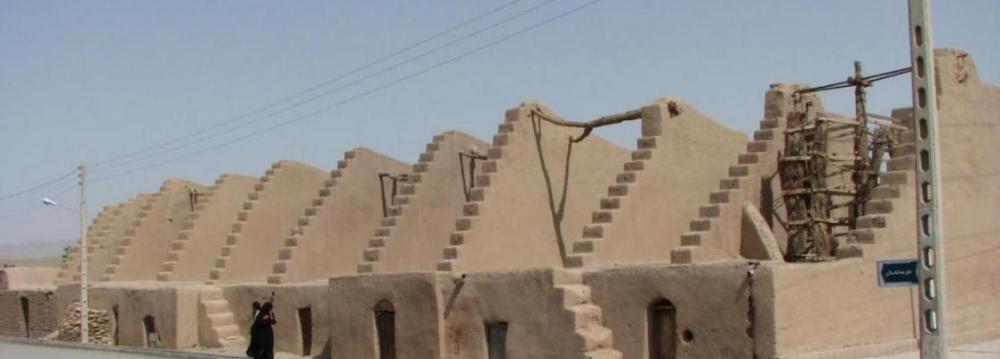Covering an area of 41,102 square meters, Nehbandan city is in the southern tip of South Khorasan Province. It is located on a vast plain field. A salt desert lies to the south of Nehbandan. From the north, it is bound by Kuh-Sorkh, Kuh-Bidmeshk, and Kuh-Bubak mountains.
Though Nehbandan is surrounded by sand deserts and salt marshes, it enjoys a 4-season river running through the desert land. People of Nehbandan grow jujube, date, pistachio, saffron, mayapple, and pomegranate. The land is rich with precious stones and black-and-white granites. The courtyard of the shrine of Imam Ali (AS) in Najaf, Iraq, was paved with the rocks brought from Nehbandan.
History
‘Neh’ and ‘Bandan’ were two important ruling seats with a deputy governor for each. Neh or Nieh ‘city’ was prosperous and more important than Bandan whose name means prison. Bandan, 75 km southeast of Neh, was where the condemned were deported. Later Neh was centralized and absorbed Bandan and its name.
Neh was an important city on the eastern edge of Lut desert and was described by the Persian historian, geographer, and epic poet Hamdollah Motawfi Qazvini in his book ‘Nozhat-ol-Qolub’ as the third land established by Ardeshir Babakan, the founder of Sassanid dynasty, according to the South Khorasan provincial ICHHTO (Iran’s Cultural Heritage, Handicrafts and Tourism Organization) website.
Shahdad-Nehbandan Road
Shahdad-Nehbandan road is one of the most beautiful desert roads in Iran. As travelers leave Shahdad for Nehbandan, they first pass by Shahr-Kutuleha (city of dwarfs) and then the hottest spot on earth, called Gandom-Beryan ‘roasted wheat’ in Lut desert, Kerman Province. Farther ahead lies the land of yardangs, thin, tall earthen structures. The road passes through the highest sand dunes of the country.
Nehbandan Castle
Within the city, on Qaem street of Nehbandan, there is a huge fortress, made of layered mud bricks. It has stood there from Sassanid era, and was inhabited until Safavid era.
Hedayat School
In 1929, the first school was established in Nehbandan. The symmetrical architecture follows Pahlavi style.
Shahdezh Fort
The Sassanid era fort is located 5 km east of Nehbandan. It is made of stone and brick. In some parts of the building no mortar was used. Ramparts, towers, soldier rooms, food storages, and a water reservoir have remained.
The fort was passed to the Ismailis. They repaired the buildings and made it distinct among their forts; unlike other Ismaili forts, Shahdezh is stratified into aristocratic buildings and ordinary residence. Thus the fort provides a unique opportunity to study social relations in a collective urban habitat.
Windmills
All over the southern region of Khorasan, especially in Nehbandan and surrounding villages, there are windmills harnessing the 120-day winds of Sistan.
Most of the windmills are installed inside Neh. Char-Farsakh, Gavand, Khansharaf, and Mighan. A significant example of the windmills is a Qajar set on Talim street, Nehbandan.
Taqavi House
Within the old town of Nehbandan there is an old house looming over the others. As the architecture tells, it dates back to Qajar era. The house features include 4 balconies on the 4 sides, arches, passageway at southeast corner ending in a stove chamber, and alabaster decorations of the courtyard.
Kaji Namakzar Wetland
Kaji Namakzar is a wetland 75 km north of Nehbandan. It covers an area of 22.765 hectares. Being lower than the surrounding regions, it drains the area’s water into a vast salt marsh. In fall and winter, the water level rises, and a large number of migratory birds come to the wetland. Sands of various colors can be seen everywhere.


